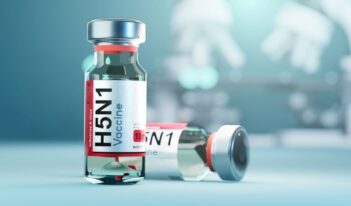
U.S. government takes measures to protect public from excessive sun exposure.
Skin cancer is the most common form of cancer in the United States and excessive exposure to the sun’s ultraviolet, or UV, rays is its principal cause. These rays are also the leading environmental factor in early skin aging, immune system suppression, and eye diseases such as cataracts, according to the Environmental Protection Agency (EPA).
The depletion of the earth’s stratospheric ozone layer has worsened the effects of these rays. To protect the ozone layer from further depletion, the United States ratified the Montreal Protocol in 1986. According to then-President Reagan, the Protocol seeks to coordinate “control of ozone-depleting substances in order to protect public health and the environment from potential adverse effects of depletion of stratospheric ozone.” Due to the resounding success of this treaty, the ozone layer is expected to recover by the year 2050.
Nevertheless, federal agencies have also undertaken measures to decrease Americans’ exposure to UV radiation by increasing awareness of its risks. The EPA, the Food and Drug Administration (FDA), and the Centers for Disease Control and Prevention (CDC) have partnered with the National Council on Skin Cancer Prevention to recognize each Friday before Memorial Day as “Don’t Fry Day.” The purpose of Don’t Fry Day is to encourage skin health and protect against skin cancer by taking preventive measures throughout the summer.
Additionally, these agencies have each initiated separate regulatory measures to protect skin health and increase awareness of excessive sun exposure. “Americans need to take steps now for extra protection from harmful UV rays and skin cancer,” said Janet McCabe, deputy assistant administrator for EPA’s Office of Air and Radiation. With this goal, the EPA began SunWise, a voluntary education program aimed at teaching children and their caregivers how to protect themselves from too much sun exposure.
Launched in 2000, SunWise involves over 31,000 schools and 5,700 other education organizations nationally. One study has suggested that the program results in greater knowledge on sun safe behaviors and overall intentions. According to another study, the SunWise program could also avert more than fifty premature deaths and 11,000 skin cancer cases if participants adopt its practices.
Like the EPA, the FDA has also taken steps related to protecting the public from the dangers of excessive sun exposure. These steps include new labeling regulations for sunscreen products as well as issuing a draft guidance for manufacturers on how to comply with these measures. Lydia Velazquez, a PharmD in the FDA’s Division of Nonprescription Regulation Development, stated that the FDA wants “consumers to understand that not all sunscreens are created equal.”
To help consumers select appropriate sunscreens, the FDA requires labels that warn of the heightened risk of skin cancer and skin aging when the sun protective factor, or SPF, is less than fifteen. Additionally, manufactures are not permitted to label their products as “sunblock” or claim that their products are “waterproof” or “sweatproof.” Rather, manufacturers must accurately state how much time consumers can expect to be protected while swimming or perspiring.
The increasing number of skin cancer cases concerns the CDC, which has issued sun safe recommendations to the public, including the advisability of wearing hats and using sunscreen.
The CDC also reminds the public that its recommendations should be followed not just over the Memorial Day holiday in the United States, but every day of the year. The federal government believes that using quality sunscreens and following other sun safe recommendations will help prevent skin cancer and health issues related to excessive exposure to the sun’s UV rays.



